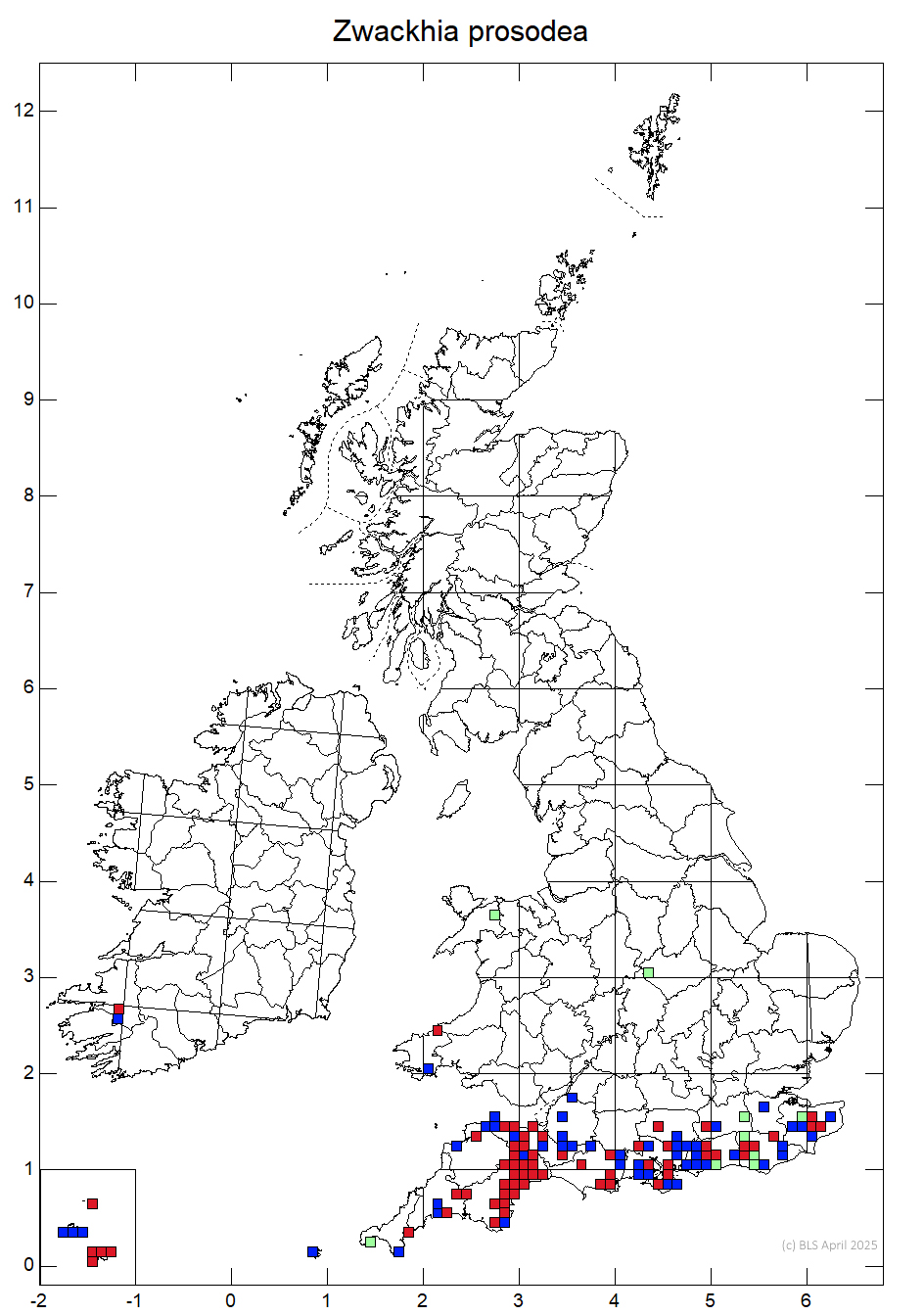Thallus crustose, thin, pale grey to dark olive-brown , smooth to minutely cracked; apothecia, lirellate, 1-3 x 0.2-0.35mm, sessile, prominent, curved to serpentine, rarely straight; remaining persistently slit-like. Ascospores (40-)50-70(-80) × 6-8 μm, 8- to 14-septate, elongate-fusiform, with a narrow perispore. Forming large spreading patches, often along the crevices of rough barked trees. All reactions negative.
Only likely to be confused with other corticolous Opegrapha species. Opegrapha xerica is found in similar very habitats on veteran trees but has smaller, shorter apothecia with a slightly exposed disc with greenish pruina; the spores are shorter and 3-5 – septate. Non-lichenized bark fungi such as Hysterium spp. have prominent sessile, lirellate apothecia that remain persistently slit like with rounded ends, but are typically straight and shorter than those of O. prosodea.
Confined to the dry bark of veteran and ancient trees especially oak and yew. A member of the Ancient Dry Bark community (Lecanactidetum premneae) on veteran and ancient parkland and field trees, or more rarely in closed-canopy pasture woodland; also on ancient Yews in churchyards (James et al, 1977). Associated species include Cresponea premnea, Lecanactis subabietina, Lecanographa lyncea and Schismatomma decolorans
Very local in southern and southwest England. Occasional and widespread in the New Forest with scattered sites in Cornwall, Devon, Dorset and South Somerset. Very rare in southwest Wales (Pembrokeshire).
Outside of the British Isles found in southwest Ireland, Killarney, Europe, Macaronesia, North America, Asia, Africa and Australia (Smith et al., 2009
Confined to South Pembrokeshire where it has been recorded from:
| Location | Grid Reference | Last Rec'd | Recorder | SSSI |
| Pembroke – Upton Castle | SN020045 | 1987 | PW James & PA Wolseley |
Vulnerable - Wales (Woods, 2010); Near Threatened - UK (Woods & Coppins, 2012); Section 42; Internationally Responsibility; UK BAP Priority
In many sites it is restricted to just one or two trees and is therefore vulnerable to the loss of the host tree though wind throw or the tree dying of natural causes, often with no trees of a suitable age for it to colonise. In some sites where there is little or no grazing trees may become overgrown with Ivy and Bramble.
- Log in to post comments

